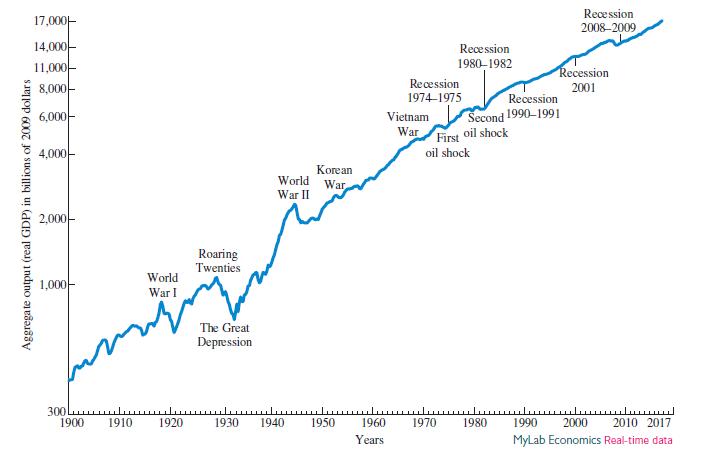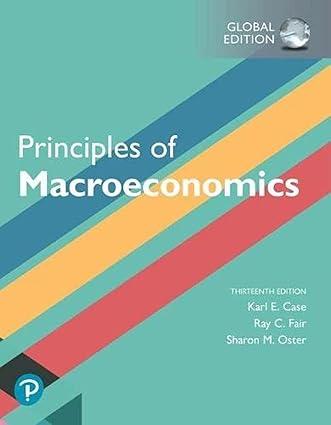As you know, the language of economics includes a heavy dose of graphs and equations. But the
Question:
As you know, the language of economics includes a heavy dose of graphs and equations. But the underlying phenomena that economist's study are the stuff of novels as well as graphs and equations. The following two passages, from The Great Gatsby by f. Scott Fitzgerald and The Grapes of Wrath by John Steinbeck, capture in graphic, although not graphical, form the economic growth and spending of the Roaring Twenties and the human side of the unemployment of the Great Depression. The Great Gatsby, written in 1925, is set in the 1920s, whereas The Grapes of Wrath, written in 1939, is set in the early 1930s. If you look at Figure 5.2 for these two periods, you will see the translation of Fitzgerald and Steinbeck into macroeconomics.
Figure 5.2

From The Great Gatsby
At least once a fortnight a corps of caterers came down with several hundred feet of canvas and enough colored lights to make a Christmas tree of Gatsby’s enormous garden. On buffet tables, garnished with glistening hors d’oeuvres, spiced baked hams crowded against salads of harlequin designs and pastry pigs and turkeys bewitched to a dark gold. In the main hall a bar with a real brass rail was set up, and stocked with gins and liquors and with cordials so long forgotten that most of his female guests were too young to know one from another.
By seven o’clock the orchestra has arrived—no thin five-piece affair but a whole pit full of oboes and trombones and saxophones and viols and cornets and piccolos and low and high drums. The last swimmers have come in from the beach now and are dressing upstairs; the cars from New York are parked five deep in the drive, and already the halls and salons and verandas are gaudy with primary colors and hair shorn in strange new ways and shawls beyond the dreams of Castile.
From The Grapes of Wrath
The moving, questing people were migrants now. Those families who had lived on a little piece of land, who had lived and died on forty acres, had eaten or starved on the produce of forty acres, had now the whole West to rove in. And they scampered about, looking for work; and the highways were streams of people, and the ditch banks were lines of people. Behind them more were coming. The great highways streamed with moving people.
Question
1. As we indicate in the introduction to this chapter, macroeconomics focuses on three concerns. Which of these concerns is covered in The Grapes of Wrath excerpt?
2. What economics textbook is featured in The Great Gatsby?
Step by Step Answer:

Principles Of Macroeconomics
ISBN: 9781292303826
13th Global Edition
Authors: Karl E. Case,Ray C. Fair , Sharon E. Oster





